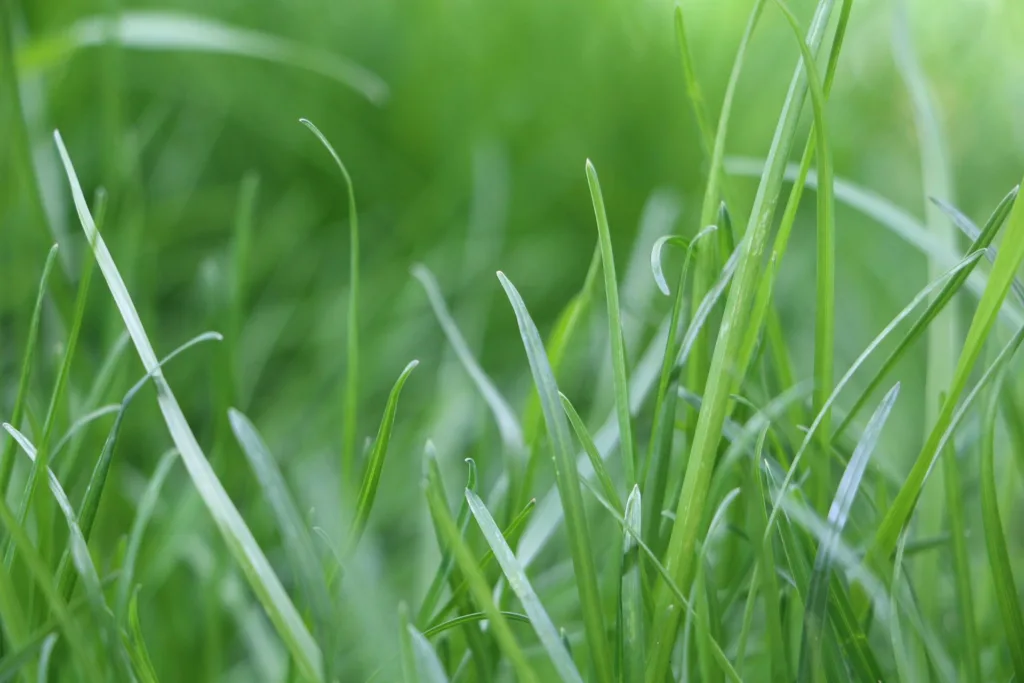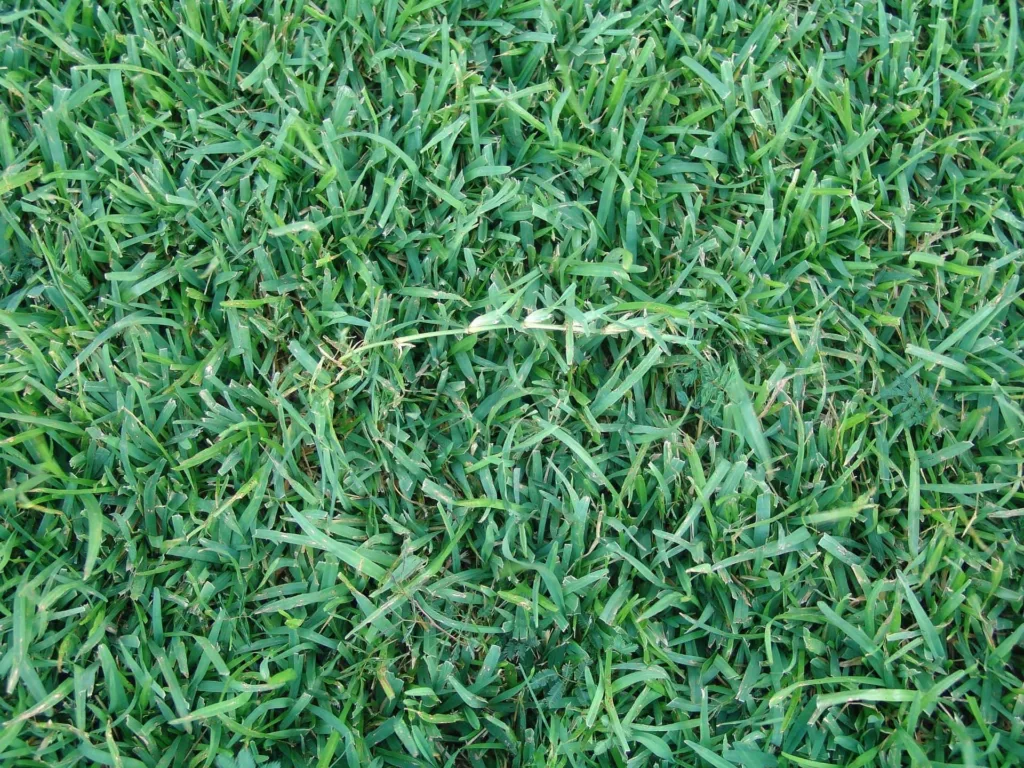Grass. It’s not just the green stuff under your feet. It’s a key player in crafting a beautiful landscape and a healthy lawn. From the cooling effect of its leaves on a hot day to the cushion it provides underfoot, every type of grass has its role, features, and best uses.
If you’re overwhelmed by the thought of choosing the right type for your lawn, worry not! You’re about to become well-acquainted with the various grass types and how to select the perfect one for your green space.
Introduction
Choosing the right type of grass for your lawn is more than just a cosmetic decision—it’s a strategic one. Different grass types thrive under different conditions, influenced heavily by climate, soil type, and the level of care you’re prepared to invest.
For someone living in a wet, cool climate, the lush, dense growth of Kentucky Bluegrass might be perfect. Conversely, in the arid heat of the Southwest, a rugged, drought-tolerant Bermuda Grass could be much more suitable.
Understanding these variations is crucial because the right grass type can drastically reduce your lawn care woes. If your yard sports the appropriate grass for your region’s climate and soil, you’ll find it needs less watering, fewer pest treatments, and could even resist local weed pressures better. In contrast, the wrong type could mean endless maintenance, more chemical treatments, and general dissatisfaction with your lawn’s appearance and health.
So, let’s dive into the world of grass types and find out which one best suits your lawn’s needs, ensuring it not only survives but thrives.

Overview of Common Grass Types
An exploration into each grass type ensures you’re well-equipped to make the best choice for your lawn. Below, we delve into each, highlighting their strengths and optimal environments.
Warm Season Grasses
1. Bermuda Grass
Bermuda grass is a warm-season turfgrass known for its durability, quick growth, and dense, lush green appearance. It thrives in full sun and warm climates, making it a popular choice for lawns, sports fields, and golf courses across the southern United States.
Bermuda grass establishes quickly, spreads aggressively through stolons and rhizomes, and recovers well from wear and damage. However, it requires regular mowing, fertilization, and adequate watering to maintain its vibrant look and can become invasive if not properly managed. Its drought tolerance and hardiness make it ideal for high-traffic areas.
- Ideal for: Hot, sunny climates.
- Characteristics: Drought-tolerant, dense, and fine-textured.
2. St. Augustine Grass
St. Augustine grass is a warm-season turfgrass prized for its thick, carpet-like growth and vibrant blue-green color, making it a favorite for residential lawns in coastal and southern regions. It thrives in humid environments and partial shade, unlike many other warm-season grasses, and spreads via above-ground stolons, allowing it to establish quickly.
Known for its soft texture and visual appeal, St. Augustine grass requires moderate maintenance, including regular mowing, fertilization, and irrigation. However, it is less tolerant of heavy foot traffic and cold temperatures and can be susceptible to pests like chinch bugs and fungal diseases.
- Ideal for: Warm, coastal areas.
- Characteristics: Shade-tolerant with broad, flat blades.
3. Zoysia Grass
Zoysia grass is a warm-season turfgrass known for its dense, fine-textured blades and excellent tolerance to heat, drought, and foot traffic. It forms a thick, lush lawn that naturally crowds out weeds and provides a soft, cushioned surface underfoot. Zoysia adapts well to various soil types and performs best in full sun to light shade.
While it grows more slowly than other grasses, requiring less frequent mowing, it does take longer to establish. Once mature, Zoysia offers a low-maintenance, visually appealing lawn with strong resistance to pests and diseases, making it a popular choice for both residential and commercial landscapes.
- Ideal for: Transition zones.
- Characteristics: Slow-growing but extremely dense.
4. Centipede Grass
Centipede grass is a warm-season, low-maintenance turfgrass known for its light green color, slow growth, and adaptability to acidic, sandy soils. It’s an ideal choice for homeowners seeking a lawn that requires minimal mowing, fertilization, and irrigation.
Centipede grass thrives in full sun to partial shade and performs well in the southeastern U.S., where hot, humid conditions prevail. While it’s not as wear-tolerant as other grasses like Bermuda, it’s favored for its ability to maintain a uniform, weed-resistant lawn with less upkeep. However, it’s sensitive to over-fertilization and cold temperatures, requiring some care in borderline climates.
- Ideal for: Acidic soils in warm climates.
- Characteristics: Low maintenance and slow-growing.
5. Bahia Grass
Bahia grass is a tough, low-maintenance warm-season grass valued for its resilience in poor, sandy soils and hot, humid climates, particularly in the southeastern U.S. It has a coarse texture and deep root system, which gives it excellent drought tolerance and erosion control capabilities, making it popular for utility areas, roadsides, and low-traffic lawns.
Bahia grass requires minimal fertilization and infrequent mowing, but its lighter green color and tendency to produce tall seed heads may not appeal to those seeking a manicured lawn. Despite its rugged nature, it’s a practical choice for sustainable, low-care landscapes.
- Ideal for: Infertile, sandy soils.
- Characteristics: Tough and drought-resistant.
6. Kikuyu Grass
Kikuyu grass is a fast-growing, warm-season turfgrass native to East Africa, prized for its aggressive spreading ability, drought tolerance, and vibrant green color. It’s commonly used in Australia, South Africa, and parts of California where warm temperatures and full sun are prevalent. Kikuyu forms a dense mat through vigorous stolon and rhizome growth, making it ideal for erosion control and high-traffic areas.
However, its invasive nature requires regular maintenance to prevent it from overtaking garden beds or neighboring lawns. While not suited for cooler climates, Kikuyu offers a hardy, low-cost solution for resilient, sun-loving lawns.
- Ideal for: High traffic areas in warmer climates.
- Characteristics: Rapid growth and good wear resistance.
Cool Season Grasses
7. Kentucky Bluegrass
Kentucky bluegrass is a cool-season turfgrass celebrated for its rich green color, fine texture, and ability to form a dense, lush lawn. It thrives in cooler climates with full sun and moderate rainfall, making it a popular choice in northern regions of the U.S.
This grass spreads through underground rhizomes, allowing it to recover well from damage and fill in bare spots over time. Kentucky bluegrass requires regular watering and fertilization to maintain its vibrant appearance and is best suited for well-drained soils. While it’s less tolerant of heat and shade than some other grasses, its classic beauty and self-repairing nature make it a favorite for high-quality lawns.
- Ideal for: Cold winters and hot summers.
- Characteristics: Beautiful color and texture but requires maintenance.
8. Perennial Ryegrass
Perennial ryegrass is a cool-season turfgrass known for its rapid germination, fine texture, and bright green color, making it a top choice for quick lawn establishment and overseeding. It performs best in temperate climates with full sun to partial shade and is highly valued for its durability and resistance to wear, making it ideal for high-traffic areas like sports fields and home lawns.
Though it doesn’t spread like Kentucky bluegrass, its fast growth and excellent disease resistance provide a dense, attractive lawn. However, it does require consistent irrigation and mowing to maintain its appearance, and it may struggle in extreme heat or drought.
- Ideal for: Cooler, maritime climates.
- Characteristics: Quick germination and fine texture.
9. Annual Ryegrass
Annual ryegrass is a fast-growing, cool-season grass primarily used for temporary ground cover, erosion control, or as a winter overseed for warm-season lawns. It germinates quickly—often within 5 to 10 days—and establishes rapidly, providing a bright green, uniform appearance.
However, as a true annual, it completes its life cycle within a single season and does not persist year after year. While it’s affordable and easy to grow, annual ryegrass lacks the durability and fine texture of perennial varieties and is more prone to die off in high heat or cold. It’s best suited for short-term use where quick coverage is the main goal.
- Ideal for: Temporary lawn needs or erosion control.
- Characteristics: Fast-growing and used for overseeding.
10. Tall Fescue
Tall fescue is a cool-season turfgrass known for its broad blades, deep green color, and excellent adaptability to a wide range of climates and soil types. It offers a strong combination of heat tolerance, drought resistance, and disease resilience, making it a top choice for transitional zones where both warm and cool weather are common.
Tall fescue grows in clumps and doesn’t spread via rhizomes or stolons, but its deep root system allows it to stay green longer during dry periods. It’s ideal for home lawns, parks, and play areas due to its durability and relatively low maintenance needs. However, overseeding may be needed to maintain uniform density over time.
- Ideal for: Wide range of climates.
- Characteristics: Deep roots and drought resistance.
11. Fine Fescue
Fine fescue is a group of cool-season grasses known for their fine-textured blades, shade tolerance, and low maintenance requirements, making them ideal for lawns in cooler climates. This group includes several species such as creeping red fescue, chewings fescue, hard fescue, and sheep fescue, each offering unique strengths in drought resistance, shade adaptability, and wear tolerance.
Fine fescues thrive in well-drained soils and require less fertilization and mowing compared to other turfgrasses. Their ability to grow in poor soil conditions and low light makes them a popular choice for eco-friendly and low-input lawns.
- Ideal for: Shady and poor soil areas.
- Characteristics: Shade-tolerant and needs minimal fertilization.
Specialty Grass Types
12. Buffalo Grass
Buffalo grass is a warm-season, native North American turfgrass prized for its exceptional drought tolerance, low maintenance needs, and adaptability to hot, dry climates. It forms a dense, fine-textured sod with soft, gray-green blades and spreads by stolons, making it ideal for lawns, parks, and naturalized areas.
Buffalo Grass requires minimal watering, fertilization, and mowing compared to traditional turfgrasses, and it thrives in full sun with well-drained soil. Although it goes dormant and turns brown in cooler temperatures, its resilience and eco-friendly characteristics make it a popular choice for sustainable landscaping in arid and semi-arid regions.
- Ideal for: Low rainfall areas.
- Characteristics: Native to North America and wear-tolerant.
13. Carpetgrass
Carpetgrass is a warm-season, coarse-textured turfgrass commonly found in the southeastern United States, particularly in low-fertility, acidic, and poorly drained soils. Known for its rapid ground coverage and dense growth habit, carpetgrass creates a low-maintenance lawn that suppresses weeds and requires minimal mowing.
It thrives in full sun to partial shade but does not tolerate drought or cold temperatures well, often going dormant or dying back in cooler climates. Although not as fine-textured or visually appealing as other turfgrasses, carpetgrass is valued for its ability to grow where other grasses struggle, making it a practical choice for erosion control and low-input lawns.
- Ideal for: Wet, acidic soils.
- Characteristics: Forms a thick mat, good for wet areas.
14. Bentgrass
Bentgrass is a cool-season turfgrass best known for its fine texture, dense growth, and exceptional mowing tolerance, making it a preferred choice for golf course greens, tees, and fairways. It thrives in cool, humid climates and performs best in well-drained, fertile soils with consistent moisture and regular maintenance.
Bentgrass can be mowed extremely short without damage, allowing for smooth, fast playing surfaces. However, it requires intensive care, including frequent mowing, irrigation, and disease management, which makes it less suitable for low-maintenance lawns. Common species include creeping bentgrass and colonial bentgrass, each offering slightly different traits suited to specific turf applications.
- Ideal for: Golf course greens.
- Characteristics: Requires intense maintenance and care.
15. Creeping Red Fescue
Creeping red fescue is a cool-season, fine-textured grass known for its excellent shade tolerance, low maintenance requirements, and adaptability to a variety of soil conditions. It spreads by underground rhizomes, allowing it to form a dense, carpet-like turf that is both attractive and resilient.
Ideal for cool, temperate regions, creeping red fescue thrives in well-drained soils and requires minimal fertilization and irrigation, making it a great choice for eco-friendly lawns and naturalized landscapes. Its ability to grow in shaded areas where other grasses struggle makes it especially valuable for lawns under tree cover or on north-facing slopes.
- Ideal for: Shaded and cooler climates.
- Characteristics: Shade-tolerant and forms a dense turf.
16. Hard Fescue
Hard fescue is a cool-season, fine-leafed turfgrass prized for its drought tolerance, low fertility requirements, and ability to thrive in poor, dry, and shaded soils. It forms a dense, upright turf with a deep green color and is highly resistant to many common lawn diseases and pests.
Unlike some other fine fescues, hard fescue does not spread aggressively by rhizomes but instead grows in clumps, making it ideal for low-maintenance lawns, naturalized areas, and erosion control. It requires minimal mowing and irrigation, making it an excellent choice for sustainable and environmentally friendly landscapes, particularly in northern and temperate climates.
- Ideal for: Dry, sandy soils in cooler climates.
- Characteristics: Low-maintenance and drought-resistant.
17. Chewings Fescue
Chewings fescue is a fine-textured, cool-season turfgrass known for its upright growth habit, excellent shade tolerance, and adaptability to low-maintenance environments. Unlike creeping red fescue, it does not spread by rhizomes but forms a dense sod through bunch-type growth, making it ideal for lawns, parks, and shaded areas where durability and appearance are important.
Chewings fescue performs well in well-drained, acidic soils and requires minimal fertilization, irrigation, and mowing. It is often included in turfgrass seed mixes for shaded or low-input lawns, valued for its resistance to disease and ability to maintain a lush, green appearance under moderate stress.
- Ideal for: Sandy and acidic soils.
- Characteristics: Similar to hard fescue but better shade tolerance.

Selecting the Right Grass for Your Region
Choosing the right grass for your lawn goes beyond just picking the greenest or thickest variety you find at the local garden center. Your local climate and soil type are pivotal factors that dictate the grass that will thrive in your yard. Here’s how to go about it.
Assess Your Local Climate
The first step is understanding whether you live in a warm or cool season zone. Warm-season grasses, like Bermuda and Zoysia, excel in the southern parts of the U.S., where summers are hot and long. Cool-season varieties, like Kentucky Bluegrass and Tall Fescue, perform better in regions with cold winters and mild summers, typically found in the northern U.S. and Canada.
Look at your area’s USDA Hardiness Zone to get an idea of which grass types can handle your local temperatures. Also, consider the humidity levels and rainfall patterns. For instance, if your area experiences low rainfall, opting for a drought-resistant grass type like Bahia might be your best bet.
Evaluate Your Soil
Grab a handful of soil from your yard and get a feel for its texture. Is it sandy, loamy, or more on the clayey side? Different grass types have preferences based on the soil drainage and nutrients available. For example, sandy soils, which drain quickly, are ideal for grass types like Creeping Red Fescue that tolerate a drier environment.
It’s also wise to get a soil test done. This test will reveal the pH level and help you understand the nutrient profile of your soil. Knowing whether your soil is acidic or alkaline can greatly influence your choice since some grasses, like Centipede Grass, thrive in acidic soils, while others may require a more neutral pH.
Match Grass to Conditions
Now that you have information about your climate and soil, match these with the grass types that will thrive under those conditions. If you’re in a warm, humid area with acidic soil, St. Augustine might do well. For cooler climates with poor soil, look toward Fine Fescue.
When choosing, also consider your yard’s specific conditions such as shade levels and foot traffic. Some grasses handle these better than others. For instance, if you have a lot of tree cover, you’ll want a shade-tolerant variety like Fine Fescue.
By carefully matching the grass type not only to your region but also to the specific conditions of your yard, you can ensure healthier growth and easier maintenance. Always keep in mind that the right grass type is key to a lush, durable lawn.
Lawn Establishment and Maintenance Tips
So, you’ve picked your perfect grass type, huh? Nice choice! But planting it is just the start. Let’s walk through some foundational steps on seeding, watering, and feeding, plus a bit on keeping your turf in top shape year-round.
Seeding
Start this gig right. If you’re working from scratch or overseeing, timing is everything. For cool-season grasses, aim for early fall or spring when the weather’s not too hot; warm-season grasses prefer late spring, just as it starts warming up. Spread those seeds evenly. You can use a spreader for large areas, or just your hands for smaller patches. Once laid, a light rake can help mix them gently into the topsoil. Don’t let ’em sit on the surface, or the birds will have a feast.
Watering
Newly seeded lawns are thirsty—keep that soil moist but not soggy. Water lightly and frequently until those sprouts are well established. Once your grass matures, it’s all about deeper, less frequent watering to encourage strong root growth. Aim for about an inch of water per week, more if it’s sweltering. Early morning’s the best time to water to reduce evaporation and fungal growth.
Feeding
Young grass needs nutrients to grow thick and strong. Start with a starter fertilizer rich in phosphorus when you plant, then switch to a nitrogen-rich mix once it takes off. Keep a regular feeding schedule—usually every 6 to 8 weeks during the growing season. Be sure not to overfeed; like junk food for kids, too much can do more harm than good.
Ongoing Care
Mowing isn’t just about keeping your lawn from turning into a jungle. It helps strengthen the grass, encouraging thicker growth. Set your mower to the right height—generally 2-3 inches for most types, though it varies. Leave those clippings on the lawn to decompose and feed the soil, unless they’re too clumpy.
As for seasonal treatments, aerate your lawn in the fall to alleviate soil compaction and promote root growth. Come spring, you might need to dethatch if the organic material on the soil surface starts to choke out your grass.
There, not too complicated, right? With a bit of care, that patch of earth will soon be a carpet of green you can brag about. Happy mowing!
Conclusion
In wrapping up our grassy journey, let’s circle back to the root of it all: choosing the right grass type is key to a successful lawn that not only thrives in your specific environment but also reduces your maintenance headaches and enhances your outdoor enjoyment.
Each grass type we’ve walked through has its merits and ideal settings – matching these with your geographic and climatic conditions, your soil type, and your lifestyle needs can significantly lift the burden off your gardening shoulders.
Now, nobody expects you to get it perfect right off the mower. Lawn care is as much about patience and experimentation as it is about knowledge. So, give yourself room to grow and adapt. Maybe the Bermuda grass that worked wonders for your neighbor turns out to be less than ideal for you, or perhaps the Fescue that you doubted initially might just surprise you. The beauty of cultivating a lawn lies as much in these trials and discoveries as in the everyday enjoyment of a green, thriving space.
Encouraged? You should be. Grab that seed bag, maybe check out a few more guides on grass types, and stitch your very own patch of green heaven. Here’s to your lawn becoming a more perfect part of your home, step by step, grass blade by grass blade. Happy gardening!


